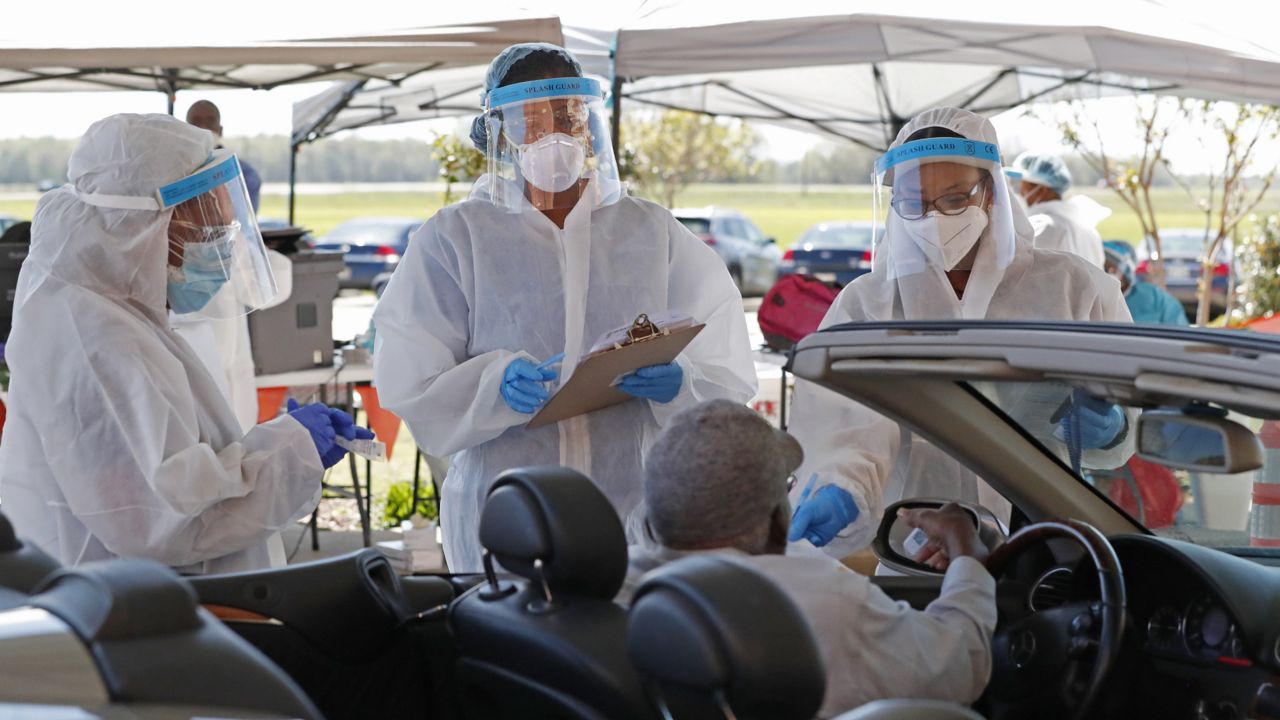NATIONWIDE — The COVID-19 pandemic will likely cost the American people a staggering $16 trillion, according to a new study published in the Journal of the American Medical Association on Monday.
The report, which was authored by Harvard University economist David Cutler and former Treasury Secretary Lawrence Summers, takes into account the “optimistic assumption” that coronavirus will be mostly contained by the Fall of 2021. Even so, the authors say the pandemic is “the greatest threat to prosperity and well-being the US has encountered since the Great Depression.”
Summers and Cutler considered both direct economic losses, i.e. higher unemployment claims and lower market spending, as well as COVID’s impact on human life when tabulating the cost to the public over the next ten years.
Jobless claims have risen across the United States as the pandemic drags on – at least 60 million people have filed unemployment claims since March, the report states. The authors point out that more jobless Americans means less cash flowing back into the markets, thus creating a cycle of decreased revenue nationwide.
“Recessions feed on themselves. Workers not at work have less to spend, and thus subsequent business revenue declines,” the report states. “The federal government offset much of the initial loss owing to the shutdown, which has averted what would likely have been a new Great Depression. But the virus is ongoing, and thus full recovery is not expected until well into the future.”
In total, the Congressional Budget Office projects a total of $7.6 trillion in lost output alone over the course of the next decade.
Perhaps more impactful than the decreased economic output is the loss of human life. As the death toll from coronavirus in the United States has soared above 215,000 people, the study claims that “death and reduced quality of life also can be measured in economic terms.”
“Although no single number is universally accepted, ranges are often used (to assess the value of a statistical life). In environmental and health policy, for example, a statistical life is assumed to be worth $10 million,” the report states. “With a more conservative value of $7 million per life, the economic cost of premature deaths expected through the next year is estimated at $4.4 trillion.”
Summers and Cutler also assume there will be further long term healthcare costs associated with the disease, as some people who contracted the virus “are likely to have significant long-term complications, including respiratory, cardiac, and mental health disorders, and may have an increased risk of premature death.”
And it’s true that COVID patients run a risk of said “long-haul” side effects. In August, Dr. Anthony Fauci said check-ups with patients who “recovered” from the virus “have a substantially high proportion of cardiovascular abnormalities, evidence of myocarditis by MRI and PET scans, evidence of emerging cardiomyopathies.”
In total, the $16 trillion sum amounts to “approximately 90% of the annual gross domestic product of the US,” the authors write.
“The economic loss is more than twice the total monetary outlay for all the wars the US has fought since September 11, 2001, including those in Afghanistan, Iraq, and Syria,” they continue, adding, “this cost is approximately the estimate of damages … from 50 years of climate change.”
The findings, while eye-catching, are similar to those from the Congressional Budget Office report from June, which stated that COVID would likely cost the U.S. $16 trillion over the next decade. In the report, CBO director Phillip Swagel cautioned that there would be an “unusually high degree of uncertainty” around such predictions, as the pandemic is still ongoing.
“If future federal policies differ from those underlying C.B.O.’s economic projections – for example, if lawmakers enact additional pandemic-related legislation – then economic outcomes will necessarily differ from those presented here,” Swagel wrote.
The study from the American Medical Association comes amid Congress’ ongoing debate over a second round of pandemic relief funding to follow up the Coronavirus Aid, Relief, and Economic Security (CARES) Act passed earlier this year. In their article, Summers and Cutler urge lawmakers to allocate significant funding to contact tracing and increased testing.
“The highest-return investments that should be included in such legislation are increased testing and contact tracing,” the authors write. “A minimum of 5% of any COVID economic relief intervention should be devoted to such health measures.”
The fate of a potential stimulus package remains unclear, as talks between Treasury Secretary Steven Mnuchin and House Speaker Nancy Pelosi appeared to have halted over the weekend.



